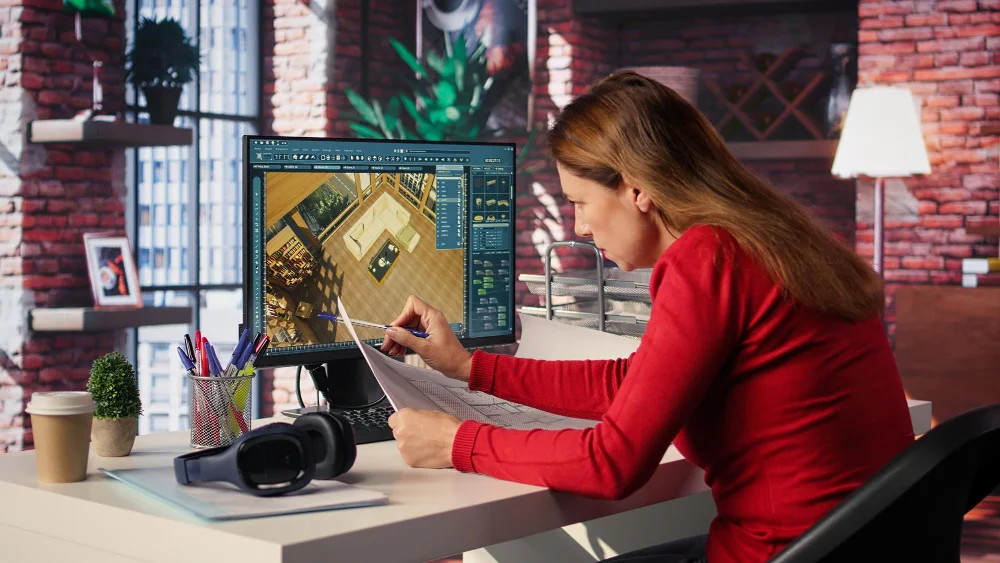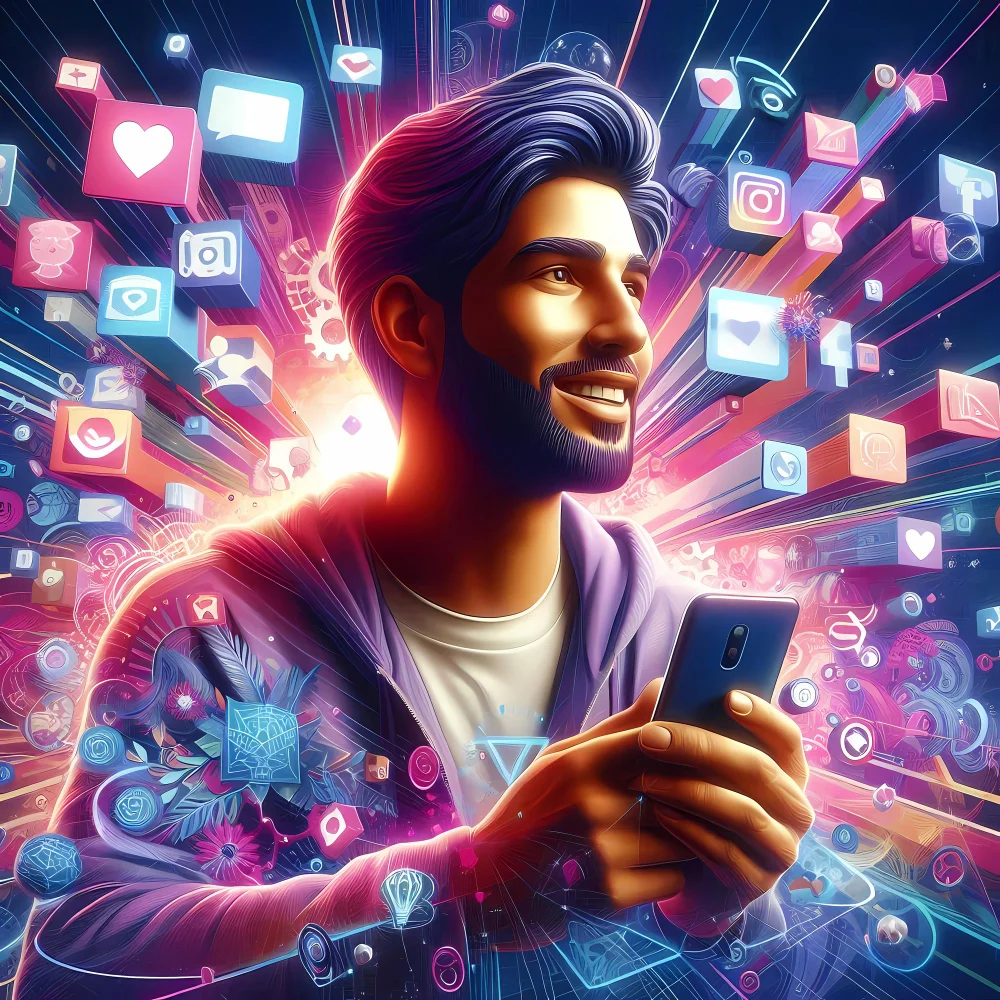In recent years, artificial intelligence (AI) has rapidly evolved from a futuristic concept into a transformative force across creative industries. One area experiencing a dramatic shift is graphic design. From automating repetitive tasks to generating original concepts, AI tools are redefining how designers work, think, and create. At Designmode24.com, this revolution is viewed not as a replacement for creativity but as a catalyst for innovation — empowering designers to push boundaries and build smarter, more engaging visuals.
Understanding AI’s Role in Modern Design
AI in graphic design refers to the integration of machine learning, computer vision, and natural language processing to assist or automate parts of the creative process. These intelligent systems can now generate layouts, recommend color palettes, create logos, and even design full campaigns.
However, the true strength of AI lies in its ability to analyze massive datasets and provide insights that help designers make better creative decisions. For instance, AI can study user behavior, engagement metrics, and visual preferences to craft designs that not only look appealing but also perform effectively.
See also Digital Detox: How to Unplug in a Hyper-Connected World by Miocado net
Automation That Enhances, Not Replaces
One of the biggest misconceptions about AI in design is that it replaces human creativity. In reality, AI automates time-consuming, repetitive tasks—freeing designers to focus on innovation, storytelling, and strategy.
Examples of AI-Powered Automation:
- Background Removal and Image Editing: Tools like Adobe Sensei and Remove.bg can instantly isolate subjects or enhance image quality.
- Layout Generation: AI systems can analyze text and images to suggest ideal layouts based on design principles.
- Smart Color Matching: Algorithms predict color harmony and automatically adjust palettes for branding consistency.
These features save hours of manual work and allow creative professionals to concentrate on high-level conceptual design.
AI as a Creative Collaborator
AI is not just a tool — it’s becoming a creative partner. Platforms powered by AI can now interpret prompts, generate design drafts, and even adapt to a designer’s individual style.
For example, text-to-image models can create original visual content from a simple description. Designers can use these AI-generated drafts as inspiration, refining and personalizing them to match their vision. This synergy between human imagination and AI precision results in designs that are both innovative and data-driven.
Personalized and Data-Driven Design
In a digital era where personalization defines success, AI empowers designers to create tailored experiences for users. By analyzing customer data — such as demographics, browsing habits, and engagement patterns — AI can suggest visuals and layouts that resonate with specific audiences.
For example, AI can identify that younger audiences prefer dynamic, high-contrast designs with bold typography, while professional users lean toward minimalist layouts. By leveraging these insights, designers can produce visuals that truly connect and convert.
This is especially relevant for brands and marketers, as user-centered design leads to stronger engagement, higher retention, and improved conversion rates.
AI Tools That Are Changing the Design Landscape
AI-driven platforms are rapidly becoming essential in the design workflow. Let’s look at some of the most impactful tools shaping modern creativity:
1. Adobe Firefly
An innovative AI assistant integrated into Adobe products, Firefly allows designers to generate images, textures, and text effects directly within their creative suite.
2. Canva Magic Studio
Known for accessibility and simplicity, Canva’s AI features enable anyone to create professional-quality designs using text-based prompts, smart resizing, and automatic brand alignment.
3. DALL·E and Midjourney
These text-to-image models allow designers to conceptualize visuals instantly, making brainstorming and prototyping much faster and more efficient.
4. Figma AI
AI integration in Figma enhances UI/UX design, enabling quick wireframe generation, automated prototyping, and intelligent layout suggestions.
AI tools like these bridge the gap between technical skill and creative expression, making design more accessible while maintaining professional quality.
Challenges of AI in Graphic Design
While the opportunities are vast, AI integration also brings challenges that designers must navigate carefully.
1. The Risk of Over-Automation
Excessive reliance on AI may lead to generic or repetitive outputs. True creativity still requires a human touch — emotion, intuition, and cultural understanding that algorithms can’t replicate.
2. Ethical Considerations
AI models are often trained on existing works, raising questions about copyright and originality. Designers must ensure they use AI-generated assets responsibly and ethically.
3. Skill Shift
As AI takes over technical tasks, designers need to focus on strategic and conceptual thinking. The role is evolving from “creator” to “creative director” — one who guides AI rather than competes with it.
The Future of AI-Driven Design
AI’s impact on design is only just beginning. The next generation of tools will go beyond assistance to co-creation, where designers and AI collaborate seamlessly. We’ll likely see more adaptive design systems — websites and interfaces that evolve automatically based on user interaction data.
AI will also play a key role in sustainability, helping designers create energy-efficient visuals, optimize digital assets, and reduce waste in both digital and physical media.
At Designmode24.com, the vision is clear: embrace AI as a creative ally. The goal is not to replace designers but to equip them with technology that amplifies creativity and innovation.
How Designers Can Stay Ahead
To stay competitive in this AI-driven landscape, designers should:
- Learn AI Tools: Experiment with AI-powered design software and explore how it enhances workflow.
- Focus on Creativity: Strengthen storytelling, branding, and conceptual skills — areas where humans excel.
- Adapt Quickly: Stay informed about the latest trends and technologies in design automation.
- Ethical Awareness: Understand AI’s impact on ownership, authenticity, and cultural influence.
By combining creativity with technology, designers can continue to lead the visual evolution of brands, media, and culture.
Conclusion
The integration of AI in graphic design marks a new era of creative possibility. It allows for faster workflows, smarter decision-making, and endless inspiration — all while maintaining the soul of human creativity.
At Designmode24.com, the focus remains on harnessing these tools responsibly, empowering designers to explore, innovate, and inspire through every pixel. AI is not the end of design as we know it; it’s the beginning of a more intelligent, inclusive, and creative future.



